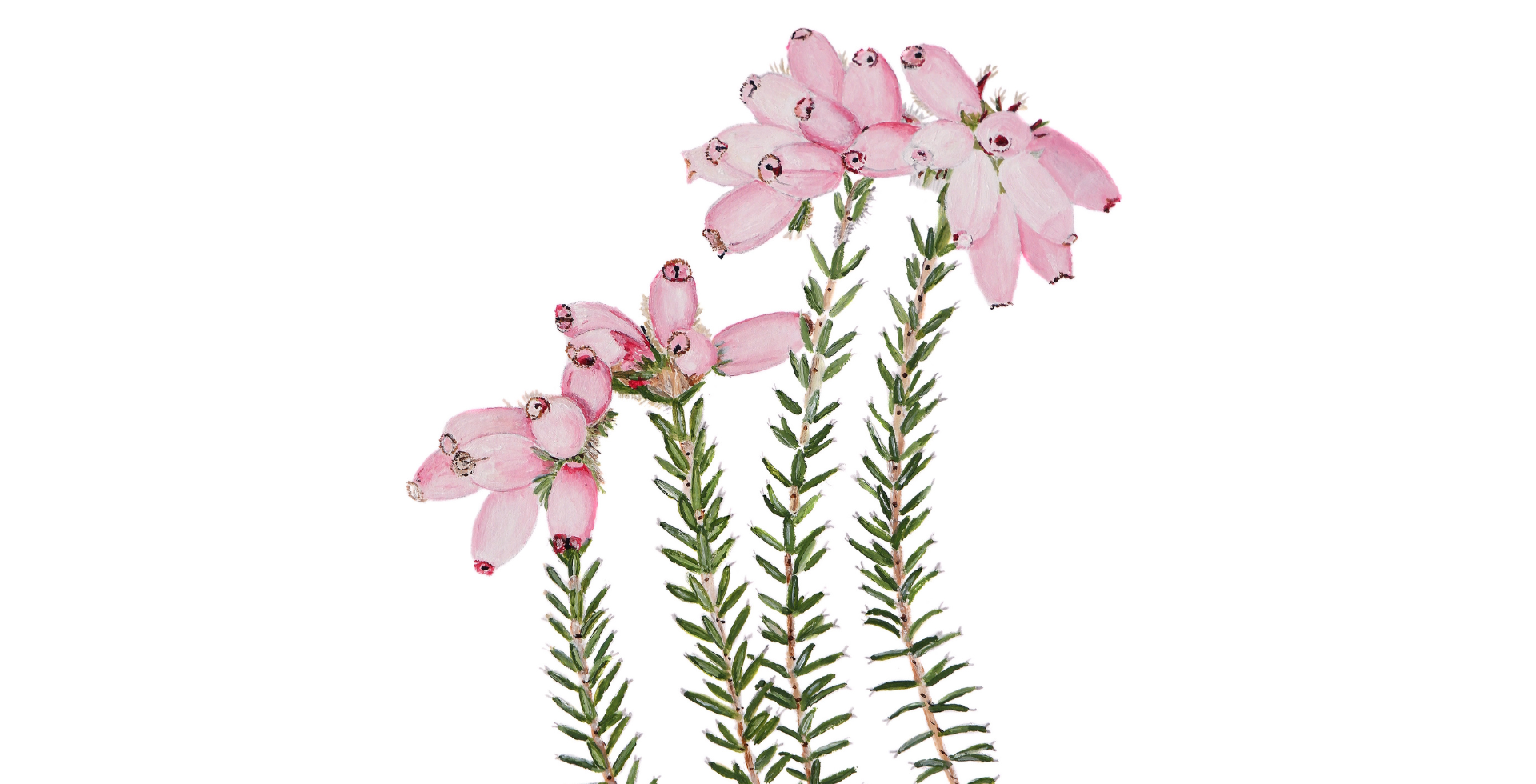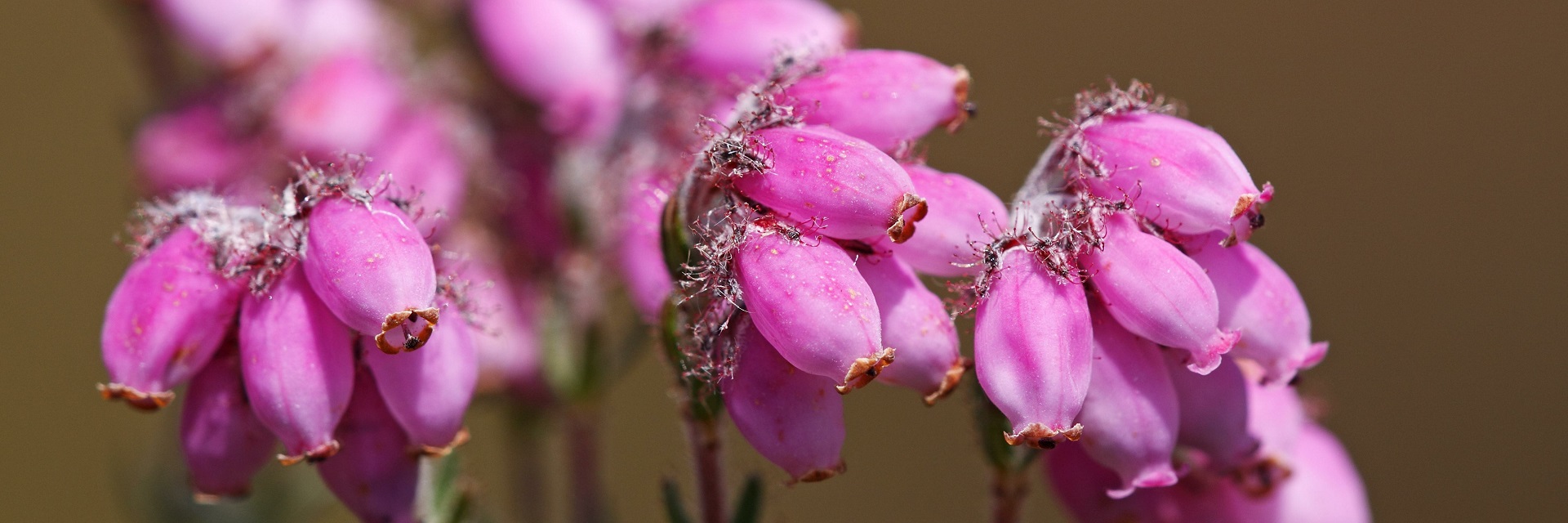These illustrations are by an artist taking part in a programme delivered by Watts Gallery Trust and funded by the Michael Varah Memorial Fund. This series of 30 Surrey Hills Indicator Species were commissioned by Surrey Hills Society and funded by Surrey Hills Trust Fund as part of the Making Space for Nature Exhibition.

Cross-leaved Heath

What is Cross-leaved Heath?
Cross-leaved heath is indicative of heathland, especially wet heath. It is a type of heather that gets its name from the distinctive whorls of four leaves along its stems, distinguishing it from bell heather which has whorls of three leaves. Cross-leaved heath has pale pink, bell-shaped flowers clustered at the end of long, branched stems and narrow, grey-green leaves. It flowers between June and September and attracts many nectar-loving insects, including bees and moths.
Why is the Cross-leaved Heath important to the Surrey Hills?
Cross-leaved heath is found widespread throughout the UK. The presence of cross-leaved heath indicates a healthy heathland habitat, with areas of wet heath.

What habitat does Cross-leaved Heath like?
Heathland
Lowland heathland is a habitat of outstanding importance for its range of nationally and internationally rare or endangered species. These ancient, open landscapes are generally found on poor, acid, sandy soils less than 300 metres above sea level. They are characterised by dwarf shrubs of the heather family.
What can be done to benefit Cross-leaved Heath?
Good heathland management for this species will benefit a wide range of other species which are associated with wet heath including many species of insect, heathland birds such as nightjar, reptiles and amphibians.
Opportunities to create/improve/extend suitable habitat for this species include:
- Grazing by hardy livestock breeds to control scrub and dominant grasses
- Regenerating heather by controlled burning, cutting or turf stripping
- Controlling bracken either by regular cutting or rolling or by treatment with an approved herbicide
- Clearing scrub and controlling its regrowth
- Selective thinning of trees including conifer plantations
- Managing drainage to conserve areas of wet heath
- Managing fire risk
Creating and managing areas for the Cross-leaved Heath will help deliver the following benefits to communities:
- Clean water
- Clean air
- Protection from and mitigation of environmental hazards
- Mitigation of and adaptation to climate change
- Thriving plants and wildlife
- Beauty, heritage and engagement
